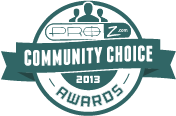 This Sunday, as a fantastic ending to the 49th annual ATA conference in Orlando (more to come on that), I headed to Kennedy Space Center, about one hour's drive from Orlando.
This Sunday, as a fantastic ending to the 49th annual ATA conference in Orlando (more to come on that), I headed to Kennedy Space Center, about one hour's drive from Orlando.At KSC, it is all about the history of space exploration, its proudest moments, and, most importantly, about the people who pioneered the race for the stars. I had the chance to meet one of those human stars: a real, true astronaut. John Blaha flew several missions for NASA in the 90s and lived on Mir for several months.
I was starstruck and completely in awe. There are only a few hundred people on the face of this planet (or any planet, as far as we know) who have been in space, and there was one of them, as friendly and approachable as they come, just smarter than the rest of us. The odds of becoming an astronaut are so infinitely low that it's amazing to meet someone who has actually achieved this seemingly unreachable childhood dream. In order to get there, John Blaha flew 300 missions in Vietnam and obtained a graduate degree in aeronautical engineering from Purdue. Impressive, indeed. NASA doesn't send slackers into space.
 Since I was there, I just could not resist taking a few pictures of grammar and translation atrocities at the U.S. Astronaut Hall of Fame (where of course, my new astronaut friend John Blaha was featured). Sure, NASA employs the most talented scientists in the world, but they appear to be a bit short on linguists. The use of the possessive pronoun in the third person seems to be as much of a mystery to NASA as growing artificial livers in space is a mystery to me.
Since I was there, I just could not resist taking a few pictures of grammar and translation atrocities at the U.S. Astronaut Hall of Fame (where of course, my new astronaut friend John Blaha was featured). Sure, NASA employs the most talented scientists in the world, but they appear to be a bit short on linguists. The use of the possessive pronoun in the third person seems to be as much of a mystery to NASA as growing artificial livers in space is a mystery to me.There's also a fantastic German-language mistake revolving around the usage of the strange German letter "ß". What the heck, they couldn't find one, so they just used a capital B. I never thought I would feel smarter than an astronaut, or at least a NASA employee.
























5 comments:
Great ;-) New stuff for http://www.uebersetzungsfehler.com/
Oh, that's great. I love that they replaced ß with B - it kind of looks similar right? Thanks for starting my day off on the right note, Judy.
What a fun post, Judy! You should write them and offer your services. Unfortunately most tourist attractions here in the U.S. are pretty myopic when it comes to providing well-translated signs for international visitors. At least NASA tried. Most other attractions don't...
Sorry for nitpicking, but “β” (hex 03B2 = Greek Small Letter Beta) is not “ß” (hex 00DF = Latin Small Letter Sharp S). It may not be as obvious as a capital B, but it is wrong nonetheless. BTW, did you know that as of June this year, a Latin Capital Letter Sharp S is defined in Unicode as hex 1E9E? It is, however, not yet part of many fonts.
Good point. We took the letter from our German version of Word, and didn't use unicode. Will remember that one, thanks!
Post a Comment